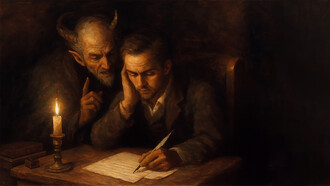Dallas, whose population is 1.3 million as of 2020, isn’t the largest city in Texas. Houston, whose population is 2.3 million as of 2020, is the largest city in Texas. However, Dallas’ primary airport, Dallas-Fort Worth International Airport (DFW), is the largest airport in Texas and the second largest airport in the United States, trailing just Denver (DEN) International Airport in Denver, Colorado.
Despite the popularity of the DFW International Airport to domestic and international travelers alike, Dallas’ secondary airport, Dallas Love Field (DAL), just six miles north of downtown Dallas, Texas, should be on your radar for your next trip to Dallas — even if you aren’t flying to the Big D on Southwest Airlines. Here’s why DAL matters, especially if you’re an aviation geek.
The Frontiers of Flight Museum (FoFM), a Smithsonian affiliate, is located at the southeast corner of Dallas Love Field (DAL) in Dallas, Texas. The FoFM is an aviation museum on the smaller side, but nonetheless, exciting for longtime aviation geeks and even the most casual of travelers. The FoFM, whose address is 6911 Lemmon Avenue in Dallas, is open from Mondays to Saturdays between 10 am and 5 pm and Sundays between 1 pm and 5 pm. The FoFM boasts a Southwest Airlines exhibit, as Southwest is a Dallas-based commercial airline whose headquarters are at DAL, a perfect fit for such an amazing aviation museum nearby.
The Frontiers of Flight Museum (FoFM) was originally founded in 1988 by businessman and civic leader William E. Cooper, politician, diplomat, and attorney Kai Bailey Hutchison, and pilot and business leader Jan Collmer. The FoFM was originally located inside a terminal at Dallas Love Field (DAL), but has been occupying a 100,000-square-foot building at the southeast corner of DAL since 2009.
Back in the day, George E. Haddaway, an aviation historian, reportedly promoted the founding of the Frontiers of Flight Museum (FoFM) after the donation of his extensive personal collection of aviation history books, journals, and photographs, along with archives of his archives to the University of Texas at Dallas as the nucleus of the History of Aviation Collection.
Fast forward to the present, and the Frontiers of Flight Museum (FoFM) boasts an extensive collection of aviation history artifacts, such as airplanes, and focuses on general aviation history, along with aerospace exploration. The FoFM’s other focus is on the Dallas-Fort Worth Metroplex’s partial role in the United States’ overall aviation history. The FoFM’s exhibits include but aren’t limited to the Apollo 7 Command Module, the World War I Sopwith Pup Biplane, and the German airship Hindenburg’s ancient artifacts. The FoFM’s exhibits also include over 200 aircraft models stemming from World War II.
There’s more to the Frontiers of Flight Museum (FoFM) than meets the eye, as the Dallas-based aviation museum is fully accessible. The FoFM welcomes museum goers of all types, including individuals with sensory-friendly needs, and goes the extra mile by hosting “Sensory-friendly days” for those individuals and their families and/or teachers.
For some context, sensory processing needs are how people receive and respond to information from their senses, such as sight, sound, taste, smell, and touch. People with sensory processing needs might experience difficulties with these sensations through hypersensitivity (when a person is overly sensitive to sensory input and gets overwhelmed easily), hyposensitivity (when a person is under sensitive and needs additional sensory input), and sensory seeking (when a person seeks additional sensory input than others). The FoFM’s setup and equipment can help these people process information similarly.
The Frontiers of Flight Museum (FoFM) is the perfect destination for aviation and non-aviation geeks in Dallas, Texas. The FoFM is situated in a state-of-the-art 100,000-square-foot facility near Dallas Love Field, home to over 30 aircraft and space vehicles, and can serve as an event venue for 25 to 1,200 guests. The FoFM is a unique event venue with the magical ability to impress family, friends, and clients, so don't write off the FoFM's potential just yet.
Now's the perfect time to see the one-of-a-kind Vought V-173, also known as the "Flying Pancake," at the Frontiers of Flight Museum (FoFM), as the Flying Pancake is one of the exclusive aircraft on any aviation geek's to-do list to view in person. The FoFM's wide variety of namesake aircraft, from the Bell JUH-1H from the Vietnam War to the Northrop Grumman EA-6B Prowler, contributes to the overall good quality of the museum.
While other aviation and aerospace museums can lack variety, the Frontiers of Flight Museum (FoFM) doesn't lack in the variety department. The FoFM's hangars feature excellent displays, such as the huge remote control the Boeing B-17 used to fly. The FoFM can walk you through the Early Cold War era to the Southwest Airlines birth, all right there in Dallas, Texas.














